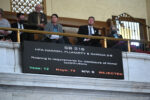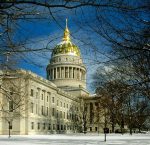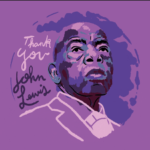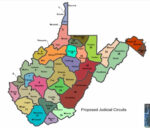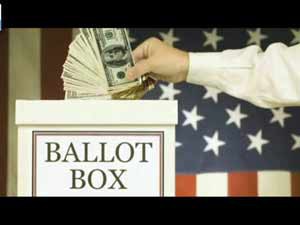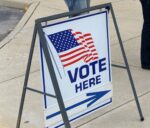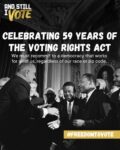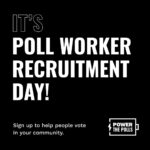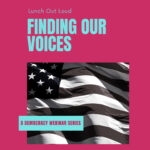Politicized and High-Dollar Races Threaten Fair and Impartial Courts
Source: Brennan Center for Justice Press Release
In total, 39 states hold elections to choose all or some of their judges. This November, 27 states will hold elections for seats on their highest courts. Early indicators suggest that several of these races will be dominated by secret outside spending and attack ads funded by groups that do not disclose their donors, according to an analysis by the Brennan Center for Justice of seven supreme court elections and primaries that were completed earlier in 2016. The likely upshot: greater negative campaigning, and voters, litigants, and potentially even judges in the dark about possible conflicts of interest.
The Brennan Center is monitoring all state supreme court contests this fall and will be issuing periodic releases and analyses in the lead-up to Election Day. Research and data will be housed on the Brennan Center’s supreme court elections page.
Troubling Early Trends: Secret Outside Spending & Attack Ads
The Brennan Center reviewed TV ad buys in the seven states that have already held a primary or early general election for their state supreme court this year, and where at least one TV ad was broadcast (AR, ID, NC, OH, TX, WI, WV). These elections suggest several trends to look for in November’s round of judicial contests.
- Outside Spending Dominated: To date, spending by outside groups has played a larger role in 2016 state supreme court elections than in past years. Candidates were responsible for only 35 percent of television spending in these early elections, compared to 42 percent overall in 2013-14 and 39 percent in 2011-12. All of the outside spending in 2016 to date has come from groups. The Republican State Leadership Committee, which describes its mission as “working to elect down-ballot, state-level Republican officeholders,” was the single largest outside spender, putting at least $2.2 million into races in three states (including television spending in West Virginia and Arkansas and radio advertisements in Wisconsin). While outside groups are distinct from judicial candidates’ campaigns, at least in theory, the separation is not always clear-cut. In February, for example, a Wisconsin Supreme Court justice uploaded b-roll footage of herself onto YouTube, which was then used in television ads by an outside group.
- Secret Spenders Predominated: Seventy percent of outside television spending came from so-called “dark money” sources, which do not disclose their donors. This dynamic raises particular concerns in judicial races, where dark money can obscure conflicts of interest in cases involving major spenders. Although data is limited, there are indications this reflects a much higher proportion of completely-undisclosed money than is seen in other state races. A recent Brennan Center study of state and local elections in six states found that 12 percent of outside spending in 2014 came from dark money sources. (The study further found that an additional 59 percent of outside spending came from “gray money” sources, entities that disclose donors in a way that makes the original sources of money difficult or impossible to discern. No gray money sources have been identified in any of the 2016 supreme court races.)
- Groups Went on the Attack: Television ads were also more negative than those seen in recent years. The rise of outside spending was a key factor. So far in 2016, outside groups were responsible for 69 percent of all negative ad spots — reducing the ability of candidates to control the tenor and substance of their own races. Overall, only 49 percent of all ad spots were positive in tone, compared with 79 percent in 2013-14 and 76 percent in 2011-12. What were the attacks about? One-in-four portrayed judges as “soft on crime.” There is growing evidence that these kind of election pressures lead to harsher sentencing in criminal cases.
- State Spending Records Fell: Of the three states that held contested off-cycle supreme court elections in 2016 (AR, WI, WV), two set state records for television spending (AR, WV). All three had more than $1 million in spending on television ads. Overall, more than $9.5 million was spent on TV in primaries and off-cycle races this year, according to estimates from Kantar Media/CMAG and West Virginia disclosure statements.
States to Watch in 2016
Looking forward, the Brennan Center has also identified judicial election battlegrounds to watch this fall — the states where harsh and expensive supreme court races look likely, based on indicators such as spending in primaries, candidate fundraising, and statements by politicians and interest groups. Several states seem likely to attract high-spending interest groups and politicized races this year, based on early spending and fundraising patterns and public statements. Already, candidates have booked TV ads in six states for the fall, totaling $1.1 million, according to a review of TV ad contracts.
In Washington and North Carolina, for example, interest groups spent six figures on radio and television ad buys during the primaries, while political leaders and interest groups in Kansas and Montana have raised the temperature of these states’ judicial races through public statements and endorsements. In Ohio, one supreme court candidate has already booked $644,000 in TV ads, in what looks poised to be a big-spending race for an open seat.
Additional information about the election landscape can be found on the Brennan Center’s supreme court elections page and in this Brennan Center press release.

